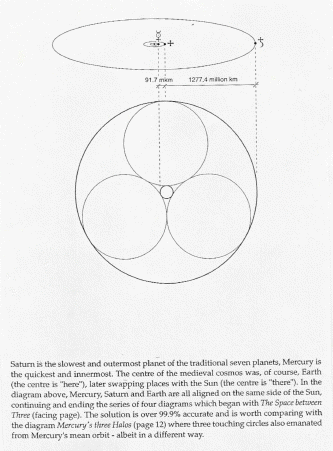A Little Book of Coincidence of the Solar System by John Martineau is one of those beauties of the universe that in one hour can make you realize how perfectly placed everything is, that everything is in perfect harmony with everything else and that there are wondrous mysteries to life that maybe we will never know.
But we can try.
And his book does a great job at showing some of those mysteries.
As a green builder I am especially interested in sacred spacial relationships, that is, spacial relationships that keep coming up again and again in the universe and in nature.
These spacial relationships resonate with us, and as a builder if I can implement them in the green renovations we do then I am creating a space that is in harmony with the universe.
This seems a grand ambition for a humble New York green contractor but if indeed we are all connected then the universal numbers are applicable anywhere, even in a Brooklyn brownstone.
Martineau’s book is an amazing insight into the solar system’s planets and their relationship together. He shows that their proportions, orbit sizes, distances to each other and relationship to the earth have astounding “coincidences”, which is another way of saying we have no idea why.
Check out this site for a detailed insight into some of the relationships. It points out countless relationships, for example:
Of all the truly amazing relationships, perhaps the best are the proportions between Earth and Mercury, and the Earth and Saturn (j), where both the orbits and physical sizes of the planets are related (both to 99% accuracy) — in one case a Phi-ve (five) pointed star, and a 30 pointed star for the other. Multi-pointed stars might seem to be stretching the point, but 30 is the first number which can be divided by 2, 3, and 5, and is the number of the outer trilithon divisions at Stonehenge. Coincidentally, Mercury and Saturn are the innermost and outermost of the medieval planets (those which can be seen with the naked eye). But you can also do the latter with a fifteen pointed star (i.e. five times three). So there!
Furthermore, the diameter of a circle based on Mercury’s aphelion (closest point) to the Sun, also happens to be the distance between the mean orbits of Mercury and Earth.
An even more famous coincidental arrangement is that Saturn takes the same number of years to go around the Sun as there are days between full (Earth) Moons (to 99.8% accuracy). Score one for the Lunatics!
Or another quote from the same site:
Stonehenge, by the way, is the most visited place of any kind in Europe — every year more people visit the site than were present on the face of the Earth at the time it was constructed. Small wonder that visitors are drawn to the geometric masterpiece. If for no other reason than that if Mars is sized so as to define the thickness of the inner bluestone horseshoe, then the Earth and Moon are sized as shown in the upper left figure. In the below first figure, all of the inner planets are sized (with Venus being slightly smaller than Earth, equivalent to the width of the main trilithon circle). Meanwhile the second figure gives the orbits of Jupiter (h) and Saturn. Note: The architect(s) of Stonehenge apparently knew the physical sizes of the inner four planets!
And the accompanying images from the book:
Or how about this image from page 27 of the Coincidence book. It speaks about the relationship between Venus and the Earth. The image below shows the paths that the two planets take (as seen from above in space) as they move around the sun over an 8 year period.
Such geometry is astoundingly beautiful on many levels, especially visually, numerically and musically.
In terms of distance from the Sun you have Mercury, Venus then Earth. Musically, one Venus day is exactly two thirds of an earth year, which translates to a musical fifth. On the other side of Venus is Mercury. Two Mercury years is equal to one Venus day, which translates into a musical octave.
Numerically you have the Fibonacci series of numbers, which has a close relation to the Golden Ratio and phi. The Fibonacci numbers are 1, 2, 3, 5, 8, 13, 21….The Golden Rule is extensively seen in ancient architecture as well as in nature. The nautilus shell is a classic example.
The Taj Mahal is one of many architectural buildings that are built along this universal relationship.
So back to the Coincidence book, the author points out that over the eight Earth years or thirteen Venusian years the two planets “kiss” five times, meaning Venus passes between the Earth and the Sun. 5, 8, and 13 are all in the Fibonacci series.
These are just a couple examples from the book which goes into much greater detail, all the while giving you a sense that we are just scratching the surface of “coincidences”.
What does it mean? I think the answer lies in our own mythology. For the image above of the dance of Venus and Earth it may be worth looking into the Eastern meaning of the lotus flower.
The author gives no answers, but simply shows what is there based on astronomical calculations.
For me it is inspiring. A green builder is building in harmony with nature. The planets are a good reference point for that. To truly be a custodian of the Earth we need to look at it from beyond, from the Solar System at the very least.





